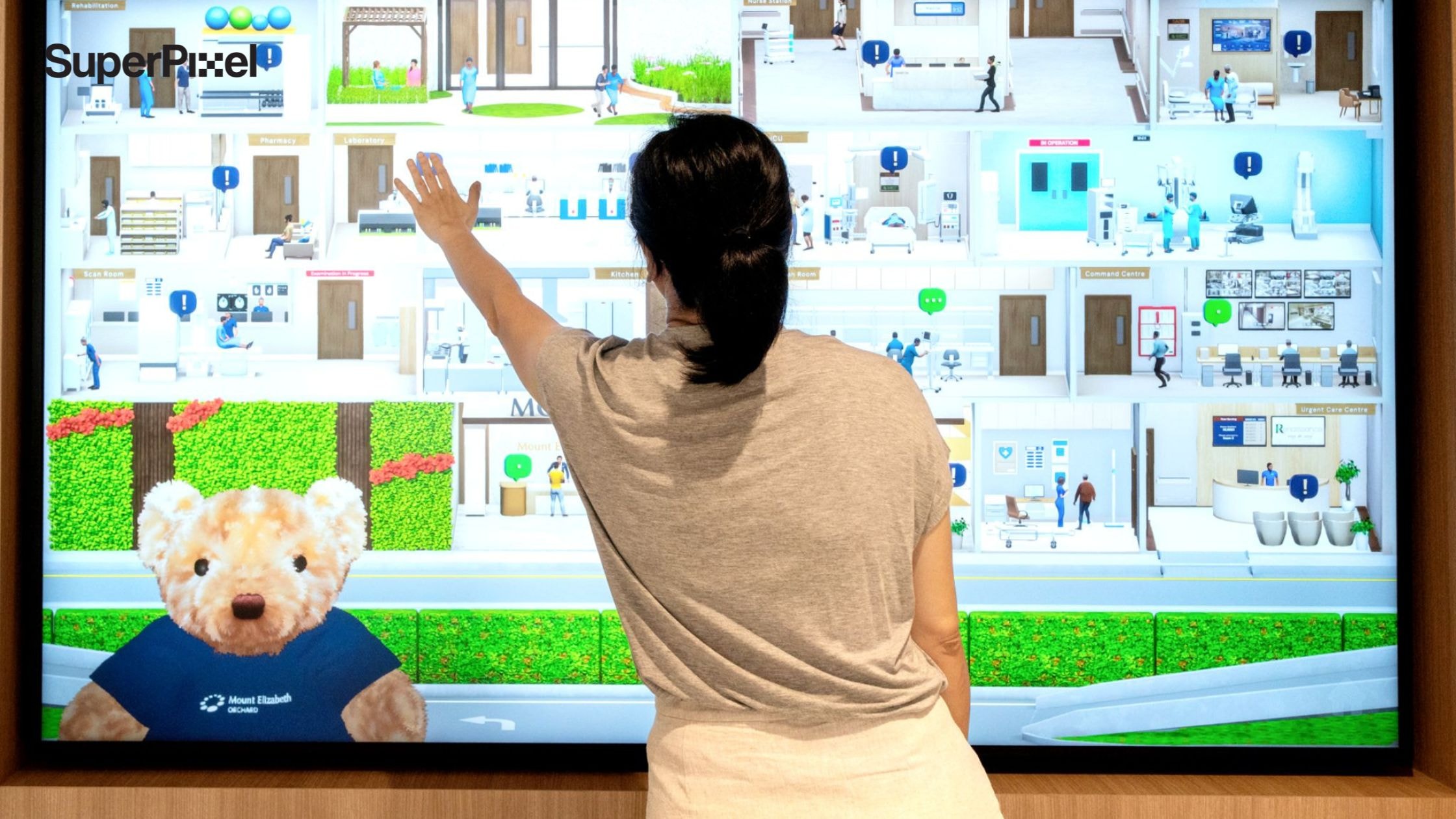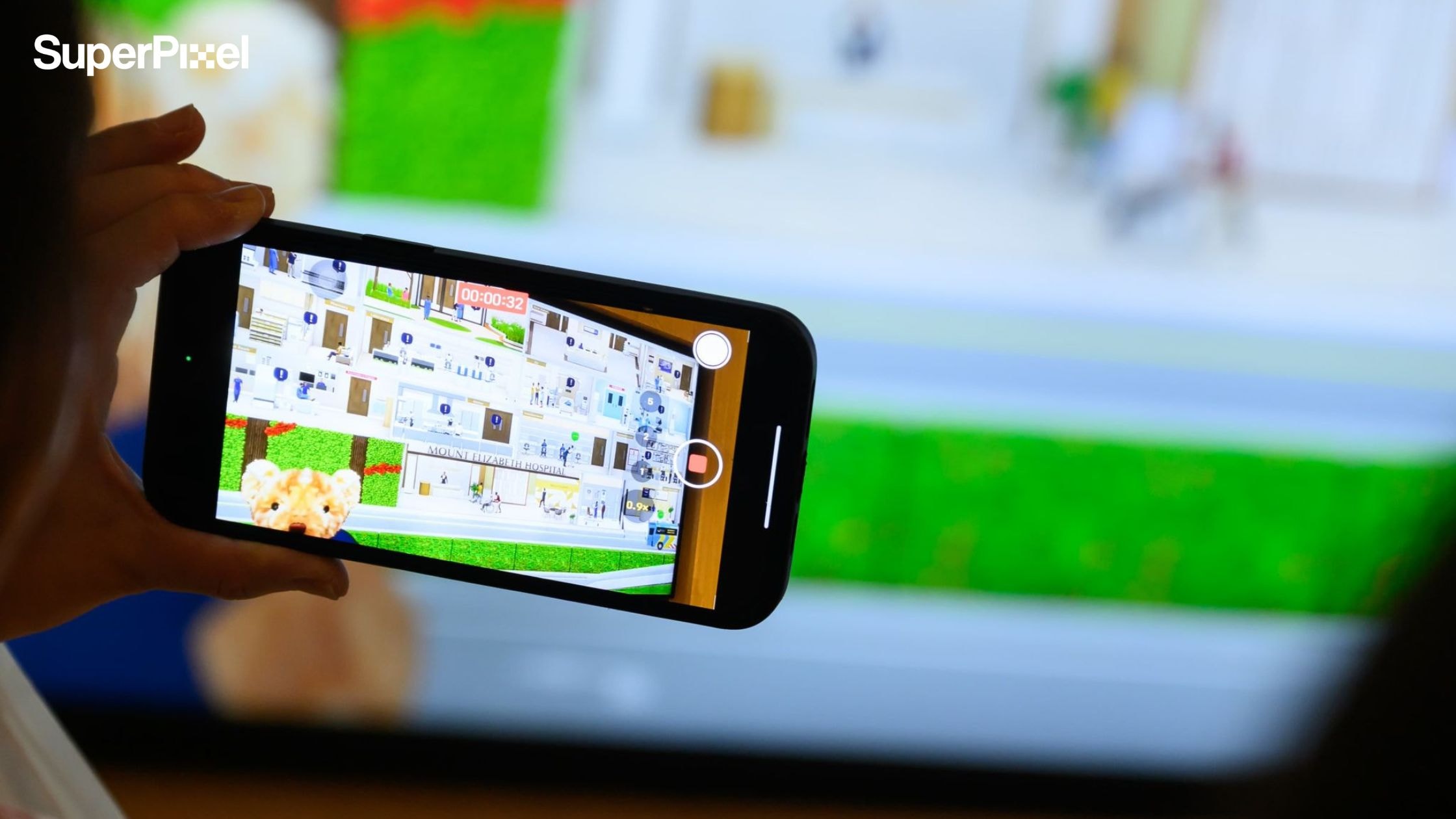When we were developing the concept for the Resorts World Sentosa large-format installation, our creative team in Singapore discovered something that shifted our entire approach.
The client’s challenge wasn’t just about showcasing a building; it was about selling an experience before a single brick was laid.
We realised 2D blueprints couldn’t inspire investors or buyers anymore. They communicate data, but they don’t evoke emotion. For high-rise concepts that aim to redefine a skyline, that emotional connection is everything.
This is where high-rise walkthrough animation services create a powerful shift, giving audiences a lifelike sense of space, scale, and feeling before construction begins.
Key Takeaways:
- High-rise walkthrough animations are cinematic tours that simulate the experience of being inside an unbuilt property, bringing architectural concepts to life.
- Unlike static images or even interactive virtual tours, walkthrough animations tell a story and create a guided emotional journey for potential buyers and investors.
- Architectural animation is a critical tool for design validation, stakeholder alignment, and securing faster investor approvals for complex architectural projects.
- The production process transforms technical CAD files into photorealistic animations through detailed 3D modelling, texturing, lighting, and post-production.
- Future trends are moving towards even more immersive experiences, integrating walkthrough animations with virtual reality (VR) for unparalleled realism.

Understanding High-Rise Walkthrough Animation
From a creative direction standpoint, what we’re really doing is crafting a cinematic tour through an unbuilt environment. A walkthrough animation isn’t just a technical fly-through; it’s a carefully orchestrated story.
We use camera movement, lighting effects, and photorealistic 3D rendering to simulate what it feels like to stand in the lobby, look out from the penthouse of a new building, or experience the public spaces.
The design principle here is deceptively simple: transform abstract architectural designs into a tangible, human experience that resonates with potential buyers.
See how VR can elevate your next campaign, explore the real costsbehind creating immersive brand experiences.
How It Differs from Standard 3D Renders and Virtual Tours
Here’s where the creative breakthrough happens. Static 3D renders are like photographs, they capture a single, perfect moment.
They’re beautiful but passive. A 3D walkthrough animation, on the other hand, is a 90-second journey. And it’s different from a virtual tour, too. A virtual tour offers freedom, letting you click around an environment at your own pace. While useful, it lacks narrative control.
Our walkthrough animations are about storytelling. We control the camera paths, the lighting, the focus guiding the viewer’s eye to highlight the most compelling features of a residential project or commercial space.
Think about the difference between a picture of a luxury apartment’s living room versus a video that smoothly glides you from the entryway, past the window with a stunning city view, and into the open-plan kitchen. The first one shows you a space; the second makes you feel like you live there.
Why It Matters for High-Rise Developments
For architects and real estate developers, the value is immense. From a creative and business standpoint, we need tools that close the gap between vision and reality.
According to a study on real estate modeling, using 3D models based on construction drawings is essential for reliability and meeting the requirements of real estate registration.
For architects, a 3D walkthrough animation improves design validation, allowing them to spot potential issues with complex designs and get client sign-off with greater confidence.
For marketing teams at real estate companies, it’s the most compelling sales material imaginable for presales campaigns. We’ve seen animated previews increase customer engagement by up to 60%, simply because people can connect emotionally with what they see.
Learn how visual storytelling can supercharge your marketing performance and deepen audience connection.

The Power of Storytelling in Architectural Visualization
Building SuperPixel from the ground up in 2015 taught me that what separates good creative from award-winning work is story. Anyone with the right software can build a 3D model.
But turning blueprints into a compelling narrative? That’s where the magic lies. An architectural animation shouldn’t just show walls and windows; it needs a story arc to create an immersive experience.
Take our work with Estée Lauder’s premium retail campaign. The challenge was to stop foot traffic in a busy environment like Changi Airport. Our solution was high-end motion graphics that told a micro-story in seconds, resulting in a 200% increase in social engagement and a 30% boost in foot traffic.
The same principle applies to architectural walkthroughs. For instance, we might create a day-to-night sequence that begins with the morning sun illuminating the master bedroom, moves through the bustling daytime amenities, and ends with a twilight view of the city lights from the balcony. This approach doesn’t just showcase features; it sells a lifestyle.
Get the complete roadmap to planning smarter, higher-impact marketing campaigns from start to finish.
Data-Driven Proof of Impact on Decision Making
Honestly speaking, this is something most brands struggle with justifying creative spend with hard data. But the numbers for architectural visualization are compelling. Virtual walkthroughs have been shown to shorten sales cycles by as much as 20–30%.
When an investor can take a virtual tour of a high-rise, they gain a comprehensive understanding much faster than by studying floor plans. It accelerates the decision-making process because it removes ambiguity and builds confidence in the project.
The stunning realism provides a clear understanding of the project’s potential, making it easier to secure funding and move forward.
Inside the Production Process: From Vision to Virtual Reality
The journey from a technical file to a cinematic reality is a highly collaborative one. At SuperPixel, we’ve refined this process across dozens of projects, from residential projects to large-scale public spaces. It’s a blend of technical expertise and creative vision.
From CAD Files and Autodesk Revit to Cinematic Reality
Here’s how we tackle this challenge at SuperPixel. The process begins with architects’ CAD files or, increasingly, with BIM (Building Information Modeling) data from software like Autodesk Revit.
A review of architectural visualization confirms that BIM is a core technology used to represent building information in a single, non-redundant format. Our team takes this technical data and begins the 3D modelling stage, building out the structure, interior spaces, and surrounding environment.
Next comes texturing, where we apply realistic material textures the grain of the wood, the reflection on the marble, the texture of the fabrics. This detail is critical for achieving unmatched realism. Then, we move to lighting, which is honestly one of the most important creative elements.
The way light falls in a room can completely change its mood. Finally, we animate the carefully planned camera paths and render the scenes using powerful tools like V-Ray or Unreal Engine before moving to post-production, where we add music, sound effects, and text overlays to complete the story and create the final product.
Applications and Benefits for Every Stakeholder
A high-quality 3D walkthrough is not a single-use asset; it’s a versatile marketing tool that delivers value across the board for all kinds of real estate projects.
For Developers and Investors: A Tool to Secure Funding
For real estate developers, a walkthrough animation is a powerful asset to secure funding. Presenting a cinematic, emotionally resonant vision of a high-rise project is far more persuasive than showing spreadsheets and blueprints.
It demonstrates ROI visually, making it an indispensable tool for fundraising, pre-sales campaigns, and even regulatory presentations for infrastructure walkthrough projects. It helps stakeholders visualise the final product long before construction even begins.
For Marketing Teams and Real Estate Agents: A Powerful Marketing Tool
Once created, the 3D walkthrough animation becomes a cornerstone of marketing efforts. Real estate agents can use it to give potential buyers a tour from anywhere in the world.
It can be used on the project website, shared across social media to generate buzz, and played on large screens at sales events and in showrooms for shopping malls or new buildings.
Shorter clips can be edited for targeted ads, and high-resolution still frames can be extracted from the animation for print brochures and digital listings. It’s a reusable content engine that gives marketing teams a wealth of material.
Highlights from Our Project Portfolio
For Mount Elizabeth Hospital’s LizGallery Digital Art, Concept 3 became one of the most fun and meaningful pieces we created.
It’s an interactive digital artwork that shows a cross-section of the entire hospital almost like peeking into a living diorama.
Each department has animated characters doing their daily tasks, and when visitors wave at the screen, the characters spring into action with special animations.
Built in Unity, this piece blends art, animation, and tech to show how the hospital works behind the scenes in a way that feels warm, human, and super engaging.
What makes Concept 3 special:
- A playful, interactive cross-section of the hospital.
- Gesture-based triggers that let visitors “activate” the scene.
- Idle animations that make the space feel alive.
- Built with Unity for smooth interactions and responsiveness.
- Result: Visitors stayed longer, interacted more, and the client loved it so much they commissioned 10 more animations for their museum project.
Choosing the Right Animation Partner
From a creative and business standpoint, selecting the right team is crucial. Your partner shouldn’t just be a software operator; they should be a creative collaborator who understands architecture, storytelling, and your business goals.
Key Questions to Ask Before You Hire
Before committing, ask about their process. How do they handle architectural accuracy and feedback from architects and interior designers? What is their protocol for data security with sensitive blueprints? A professional team will have a clear, transparent workflow.
At SuperPixel, our team specializes in a collaborative approach, ensuring clients are involved at key milestones.
Red Flags to Avoid
Be cautious of studios that promise instant delivery at a suspiciously low competitive price. Quality 3D walkthrough animation takes time and expertise. A lack of architectural understanding is another major red flag. If a studio can’t speak the language of design and construction, they won’t be able to accurately translate your vision.
Conclusion: Bringing Your Vision to Life, Long Before Construction Begins
In Singapore’s competitive real estate landscape, vision alone isn’t enough. You have to make people feel that vision. Before the first beam of a high-rise is placed, your audience from investors to future residents can already walk the halls and experience the space.
That’s the transformative power of 3D walkthrough animation. It’s not just about showcasing a building; it’s about building belief, accelerating decision-making, and turning architectural concepts into tangible, exciting realities.
Frequently Asked Questions
How much does a high-rise walkthrough animation cost?
The cost can vary quite a bit, actually, depending on the project scope and complexity. Factors include the project size, the detail level required, the length of the animation, and the number of unique camera paths.
A simple animation might start in the low five figures, while a highly detailed, cinematic experience for a luxury high-rise could be significantly more. For a clearer idea, we’ve built an animation cost calculator to help with creative budget planning.
How long does a 3D walkthrough animation take to create?
Timelines typically range from a few weeks to a few months. For a standard residential project, a 3-week to 6-week timeline is common. More complex projects, like large shopping malls or entire multi-building developments, can take longer.
The key is a collaborative process with clear milestones for feedback and revisions to maintain both quality and momentum.
What is the difference between architectural animation and a virtual tour?
That’s a solid question, actually. An architectural animation is a non-interactive, cinematic video that guides the viewer through a space along a predetermined path. It’s about telling a specific story.
A virtual tour, on the other hand, is an interactive experience where the user can click to navigate through different rooms and look around 360 degrees. Both are powerful marketing tools, but they serve different purposes, one is for storytelling, the other for exploration.